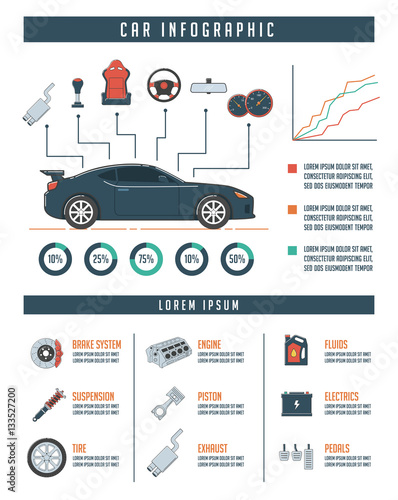Open The Hood To Uncover Typical Brake System Problems And Their Fixes, However What About Mushy Brake Pedals? Find Out The Option In Advance! Find Out More Below
Open The Hood To Uncover Typical Brake System Problems And Their Fixes, However What About Mushy Brake Pedals? Find Out The Option In Advance! Find Out More Below
Blog Article
Article Produced By-McGrath Brooks
When it involves your automobile's brake system, understanding typical concerns can conserve you from prospective safety and security risks. From determining brake pad wear to resolving brake liquid leakages, understanding exactly how to tackle these issues is essential. But what about those spongy brake pedals? There's a solution for that as well. Remain tuned to find out more about these issues and the practical options that can keep you safely on the road.
Brake Pad Use and Replacement
When it involves maintaining your car's brake system, one important aspect to keep an eye on is the wear and replacement of brake pads. https://oil-change-prices-near-me85062.tokka-blog.com/30101651/having-trouble-picking-the-excellent-auto-repair-shop-discover-crucial-techniques-for-evaluating-regional-technicians-to-confirm-your-automobile-is-in-secure-hands are necessary elements that push against the brake rotors to slow down or stop your vehicle. Over time, these pads wear down because of friction, requiring routine evaluation and replacement to guarantee your brakes function effectively.
To identify if your brake pads require replacement, listen for shrilling or grinding noises when you use the brakes. In addition, if your automobile takes longer to quit or you notice vibrations or pulsations when stopping, it may be time to replace the brake pads.
Ignoring worn brake pads can bring about lowered stopping efficiency, damage to various other brake elements, or perhaps brake failing.
Changing brake pads is a relatively uncomplicated process for lots of lorries. However, if you're unclear or unpleasant doing this job, it's best to seek advice from an expert auto mechanic to make sure appropriate setup and optimal brake efficiency.
On scottsdale pro tech inspecting and replacing brake pads is crucial for your safety and security and the long life of your automobile's braking system.
Brake Fluid Leaks and Upkeep
To ensure your car's brake system functions ideally, it is very important to likewise focus on brake fluid leakages and maintenance. Brake fluid is important for transferring the force from your foot on the brake pedal to the real braking system. One common issue with brake liquid is leaks, which can take place as a result of deteriorated brake lines, seals, or connections. If you see a pool or leaks under your cars and truck, it's essential to resolve the leakage without delay to prevent a prospective brake failure.
Frequently checking your brake liquid level is crucial to keeping your brake system. Low brake liquid can bring about air getting in the brake lines, which compromises braking performance.
Furthermore, old or infected brake liquid can affect the total performance of your brakes. It's suggested to follow the maker's guidelines on when to alter the brake fluid, typically every 2 years.
Spongy Brake Pedal: Bleeding Brakes
If you've ever before experienced a squishy brake pedal while driving, you understand the importance of keeping a firm and receptive stopping system. One common cause of a squishy brake pedal is air entraped in the brake lines. When air enters the brake system, it can bring about a loss of hydraulic stress, leading to that disturbing squishy feeling when you push the brake pedal.
To resolve this concern, hemorrhaging the brakes is essential. Bleeding the brakes entails eliminating the air from the brake lines to restore proper hydraulic pressure.
To bleed certified auto repair , you'll require a helper to aid you. Start by locating the brake bleeder shutoff on each wheel, normally located near the brake caliper. With a wrench, loosen the shutoff and have your assistant press the brake pedal while you observe any air bubbles appearing. Repeat this procedure for every wheel, beginning with the wheel farthest from the master cylinder and moving more detailed.
When you no longer see air bubbles and just clear fluid emerges, tighten the valve and top up the brake liquid storage tank as needed. Hemorrhaging the brakes aids make certain a firm brake pedal and improves overall stopping performance.
Verdict
Since you recognize typical brake concerns and just how to repair them, you can guarantee your car's safety and security and efficiency. Bear in mind to pay attention for warning signs like screeching sounds or spongy brake pedals, and resolve them quickly. Normal maintenance and prompt substitutes are vital to maintaining your brakes in leading problem. Keep proactive and mindful to your brake system to delight in secure and dependable driving experiences.
